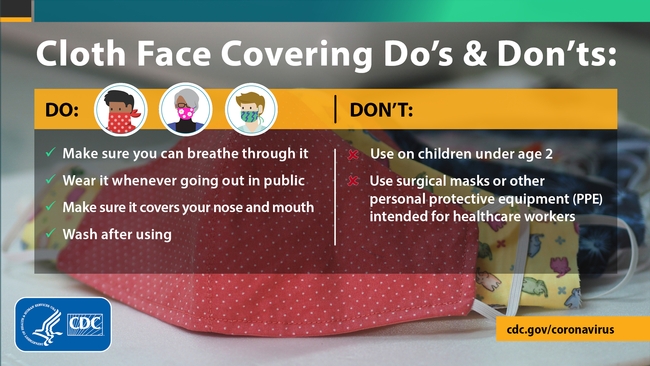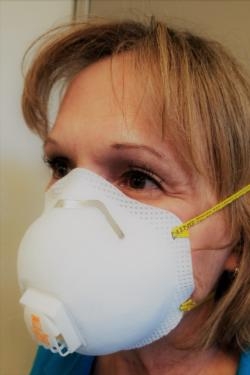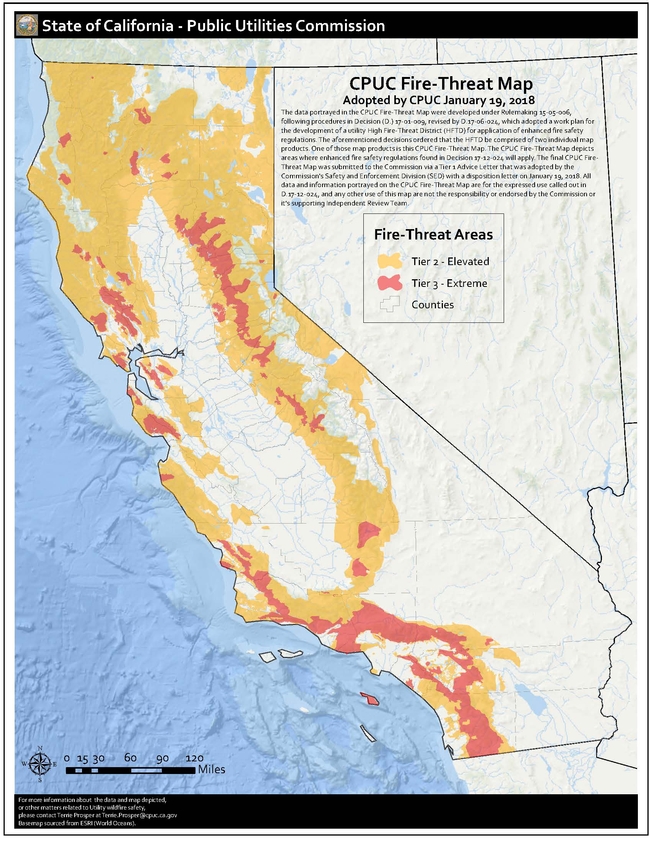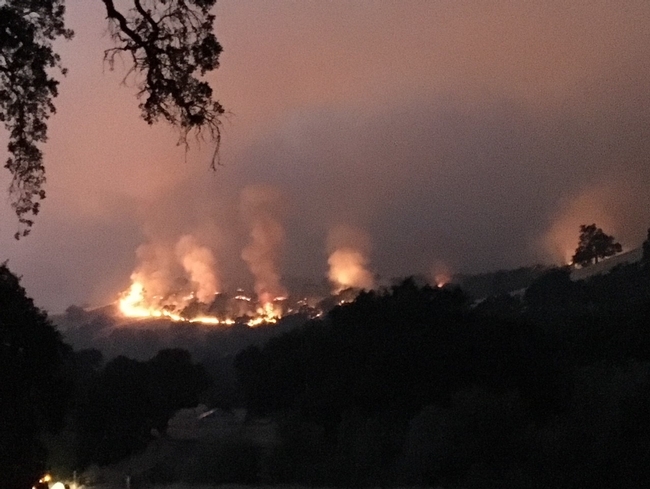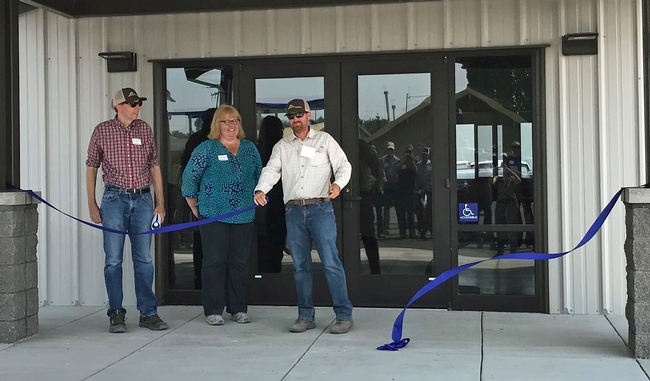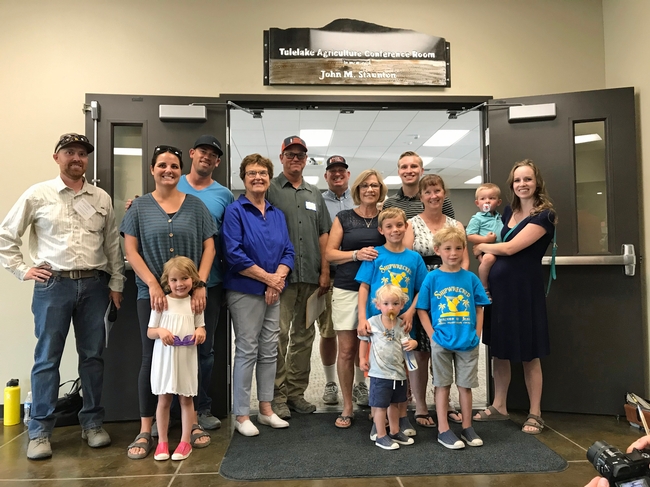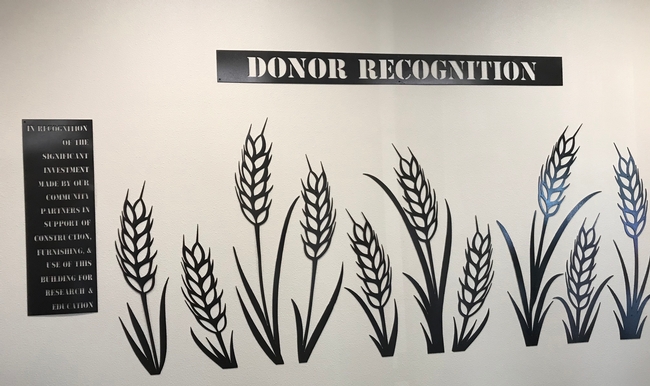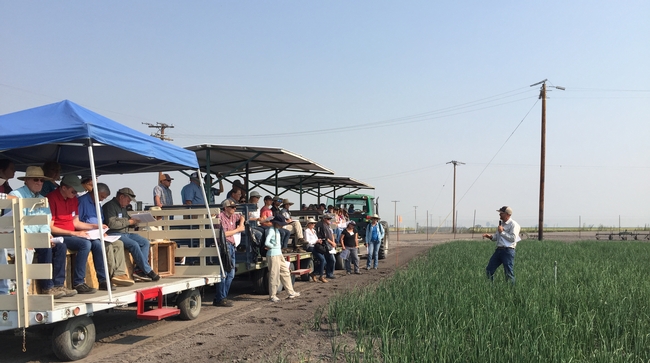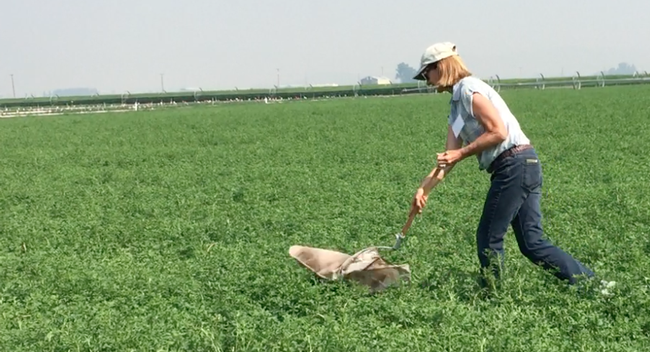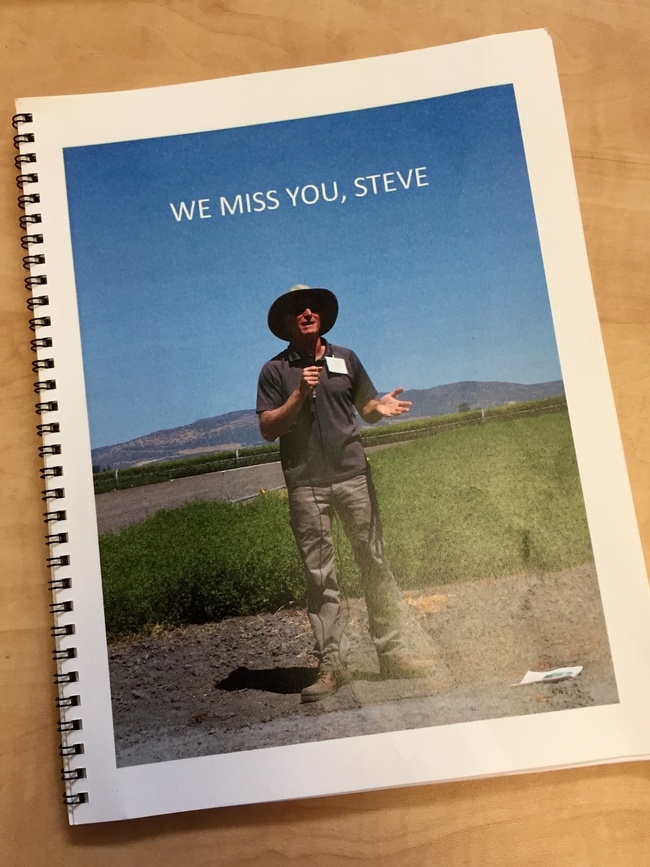Posts Tagged: Risk
Safety standards set for resuming in-person activities
Some county health authorities have begun to modify local shelter-at-home orders for COVID-19 and relax restrictions on low-risk activities. To ensure that we continue to protect the health and safety of our people and our communities, UC ANR has developed UC ANR Safety Standards for Resuming In-Person Activity, Stage 2 to outline protocols for our programs and work locations.
The safety standards are informed by state, county and UC best practices, and are intended to help UC Cooperative Extension directors, Research and Extension Center directors and statewide program leaders plan for the eventual resumption of some in-person activities.
For those counties that have authorized return to in-person activity under Stage 2, UC ANR directors are now required to document their plans for in-person work activity with the ANR Emergency Response team based on the safety standards. Local plans may vary from county to county, and may change over time to be more or less restrictive as the impact of reopening unfolds.
It is important to remember that the state is allowing for the resumption of limited onsite operations. UC ANR employees and volunteers who can still work or engage remotely should continue to do so until Governor Newsom completely lifts California's stay-at-home order and UC ANR advises it is appropriate to return to in-person operations.
ANR directors contributed to the development of ANR's safety standards, and we've asked them to help address questions and concerns and to reinforce the steps being taken to provide a safe working environment.
“Throughout this process, the safety and health of ANR's employees, volunteers and clientele are the top priority as we resume in-person activities,” said Brian Oatman, director of Risk & Safety Services.
In general, ANR will be taking a slow and deliberate approach to expanding in-person activities, and most of us will continue to work remotely for the immediate future.
Several questions about resuming in-person activities were answered during the ANR town hall meeting on May 28. A recording of that town hall will be posted at https://ucanr.edu/sites/anrstaff/All_Hands.
FAQs have been developed to address questions asked during the May 28 Town Hall meeting concerning safety measures related to COVID-19, budgetary impacts and more. Please visit http://ucanr.edu/sites/safety/files/327731.pdf to read the questions and answers.
For resources related to COVID-19, visit https://ucanr.edu/covid19.
New rules passed to protect workers from wildfire smoke: guidance available
Cal/OSHA recently passed an emergency regulation to establish standards to protect workers from the hazards of wildfire smoke. This standard has four primary requirements:
- Identify potential exposures to harmful air quality caused by wildfire smoke (i.e. monitor Air Quality Index (AQI) forecasts and daily levels during wildfire events).
- Communicate wildfire smoke hazards, air quality conditions, protective measures, and encourage feedback from employees.
- Train employees who are reasonably anticipated to be affected by unhealthy air quality caused by wildfire smoke.
- Control harmful exposure to outdoor workers by various methods as feasible. During unhealthy air quality events, these control measures may include working indoors in a building with filtered air, limiting the duration and intensity of outdoor work, or use of a filtering respirator when other means are not effective or practical to control exposure. The standard requires that when the AQI for PM2.5 reaches 151 or higher, the employer must make respirators available for employees to use if they must work outdoors.
UC ANR Risk & Safety Services has developed guidance and training on how to comply with this new regulation at http://ucanr.edu/protectfromwildfiresmoke as well as a PowerPoint training for safety coordinators to share with employees. Risk & Safety Services is also procuring respirators that will be shipped to all ANR locations.
“Since this is a brand-new regulation, we expect that additional guidance will come out from Cal/OSHA in the next few months,” said Brian Oatman, director of Risk & Safety Services.
In addition to this Cal/OSHA standard, a team from all UC campuses and ANR has been developing a decision matrix for guiding how UC locations will respond to unhealthy air quality due to wildfire smoke. This decision matrix will include various types of activities, such as outdoor workers, volunteers, athletics, camps, and youth activities. We will share this additional information as the decision matrix is finalized.
If you have questions about the new wildfire smoke rules, please contact Brian Oatman at (530) 750-1264 or baoatman@ucanr.edu.
Top 3 things to know about public safety power shutoff
To reduce the likelihood or severity of fire incidents during extreme weather or potential wildfire conditions, California has approved the Public Safety Power Shutoff Program allowing utility companies to turn off power as a preventive measure.
UC ANR Risk & Safety Services has prepared Safety Note #199 PUBLIC SAFETY POWER SHUTOFFS (PSPS) to provide tips and links to additional information.
Here are the three most important things to know about public safety power shutoffs:
1. The decision and action to turn off power is made by each energy company and is based on a combination of factors, including high winds, red flag warnings, low humidity, dry vegetation serving as fuel, fire/wind threat to electric infrastructure, on-the ground observations, and overall risk to public safety. Monitor these conditions in your immediate area and be prepared to act. Visit http://prepareforpowerdown.com to learn more. Additionally, the California Public Utilities Commission has posted maps of areas they have determined to have the greatest fire threat https://www.cpuc.ca.gov/FireThreatMaps/. You can review these maps to better understand the potential fire threat at your location and other locations that you visit for research, extension or other activities.
2. Sign up for alerts! Update your personal and office location contact information with your local energy company. You can do so by contacting the company, visiting their website, or by visiting http://prepareforpowerdown.com. If you are alerted of a possible shutdown, look for more detailed information from your utility company's website or social media accounts to better understand how the shutdown may affect you. A PSPS will usually affect a specific area or neighborhood, not an entire city or county. In some cases, the utility will post maps of the affected area.
3. If your office is closed or affected due to a PSPS or other emergency, directors or office managers should notify ANR Risk & Safety Services by contacting Brian Oatman (baoatman@ucanr.edu). If employees aren't able to work due to a natural disaster or emergency, ANR Human Resources (anrstaffpersonnel@ucanr.edu) should also be notified so that arrangements may be made to track and report employee leave time during the emergency.
Wildfire impacts ANR community
There are 19 wildfires threatening communities all over the state and causing concern for our friends and colleagues. We've been in touch with our colleagues in the fire zones and everyone is safe and, as far as we know, no ANR members have lost homes. Here's an update from the affected areas.
In Lake County, the UCCE office is closed and staff members have been evacuated from their homes since Saturday due to the Mendocino Complex fires.
Hopland REC was hit hard by the River Fire. The good news is the evacuation order was lifted Monday and all Hopland Research and Extension Center employees are safe and the headquarter buildings are undamaged. The guard dog that had gone missing has been found. The animals were moved on Friday and all livestock are safe and accounted for. Roughly 2500 acres of the upper pastures burned and the domestic water line from the spring is down. On Friday, Cal Fire set up Incident Command Post at Hopland REC with 6+ engines, three bulldozers and a water tanker. Kudos to John Bailey, superintendent and interim director, and staff for their efforts, which no doubt limited the damage.
UCCE Shasta office is open. Many staff members evacuated due to the massive Carr Fire. Last week, 4-H members helped relocate animals to safety. At least one 4-H family lost their home to the Carr Fire – and 4-H advisor Nate Caeton fears others he hasn't been able to contact in the West Side 4-H Club have lost homes – so the local UCCE staff is reaching out to see how they can help.
UCCE Mendocino office is open. All employees are safe and the office suffered no damage from the Ranch Fire.
UCCE Riverside office is open. A Master Gardener volunteer lost her home in Idyllwild to the Cranston Fire. UCCE Master Gardener coordinator Rosa Olaiz and the rest of the UCCE Riverside County staff are safe and are making plans to assist the volunteer.
UCCE San Bernardino office is open and all staff members are safe from the Cranston Fire.
As the fires are still active, we're continuing to monitor the situation and hope for the best.
Because emergencies can arise without warning, UC ANR Environmental Health and Safety has this Safety Note to help make plans http://safety.ucanr.edu/files/152253.pdf. You can also learn what to do before, during and after a fire at http://cesutter.ucanr.edu/LivingWithFire, a website by Kate Wilkin, UCCE forestry, fire and natural resources advisor for Sutter, Yuba, Butte and Nevada counties.
Thank you all for your hard work and dedication, especially those of you impacted by the fires.
Sincerely,
Glenda Humiston
Vice President
Intermountain REC brings state-of-the-art conferencing to Tulelake
Intermountain Research and Extension Center (IREC) celebrated the grand opening of a multipurpose conference and laboratory building on July 26. The facility will be available for use by private and public groups for business meetings, job fairs, trainings and conferences.
"The facility is the first in the Tulelake area to offer modern audio-visual infrastructure and high-speed internet connectivity capable of supporting remote presentations to stay in touch with groups from around the world," said Rob Wilson, IREC director. "We hope this facility will greatly increase the visibility and accessibility of local events and help draw more regional attention to the area."
The conference room was dedicated in honor of the late John Staunton, a local research collaborator with UC Agriculture and Natural Resources who passed away in 2015. Staunton Farms and the Staunton family donated $25,000 to support the building project and recognize the Tulelake farmer and his long-standing support of agriculture and research.
Winema Elevators/Western Milling, Sensient Natural Ingredients, Macy's Flying Service, and Basin Fertilizer also contributed support.
UC awarded approximately $2 million for this capital improvement project with funds from UC lease revenue bonds to pay for most of the building's design and construction costs, but additional support is needed to complete the project. Intermountain REC has set a fundraising goal of $100,000 to pay for tables, chairs, furnishing and lab equipment for the building.
A special UC fund has been created to collect tax-deductible contributions to be used solely for this building project. Donations over $50 will receive recognition in print and on the IREC website. Donations over $1,000 will receive recognition on the donor wall in the building entryway. Name plate recognition on the donor wall will be based on the gift amount: Gold ($2,500+), Silver ($1,750 to $2,499), and Bronze ($1,000 to $1,749). Donations can be made via check using the enclosed envelope or by credit card by visiting the IREC website at http://irec.ucanr.edu and clicking the “Make a gift” link.
The ribbon cutting followed the 2018 IREC field day, an annual event that showcases the research underway at the 140-acre facility. Charlie Pickett of USDA, UC Davis Plant Breeding Center director Charlie Brummer, UCCE farm advisors David Lile and Rachael Long and UCCE specialist Dan Putnam joined Wilson in giving research updates on the tour.
Research presentations included work on biological control of cereal leaf beetle, influence of fall harvest management of irrigated grass hays, onion white rot, managing alfalfa weevil and clover rootcucurlio, pulse crop options for theKlamath Basin, cover crops and amendments, cutting schedule effects on lowlignin alfalfa andgermplasm evaluation of alfalfa and tallfescue.
Reporter Danielle Jester, who covered the events for the Siskiyou Daily News, noted the palpable absence of the late Steve Orloff, who was a UCCE farm advisor for Siskiyou County for 25 years. “Orloff's absence was noticeably felt throughout the day,” she wrote. “He passed away in October of 2017, and his influence in Siskiyou County's ag industry was very apparent, evidenced in part by the many mentions of his name and work throughout the day. IREC paid tribute to Orloff in the final page of its field day guide, which featured a full-page image of Orloff during a previous field day, with the words, ‘We miss you, Steve.'”
In the news article, Jester also wrote, “The information gleaned through research at the IREC can be invaluable to farmers and other researchers. Through its years of experimentation, the center has helped growers develop more effective practices in a wide range of areas, from determining the crops that will grow best in the local climate, to selecting the most economically viable crops for the region, to understanding the most effective ways to manage pests and disease.”

